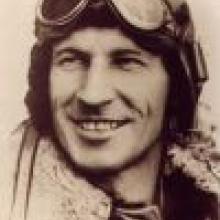
The final lap of the flight - from Richmond aerodrome (Sydney) to Christchurch - was covered in the remarkably fast time of 14 hours 25 minutes. The distance by direct air route is 1167 nautical miles, but as the plane came via Cook Strait the actual distance covered was 1660 miles, the average speed being 119 miles per hour.
In recognition of the remarkable achievement of Squadron-leader Kingsford Smith and his companions in conquering the Tasman, and incidentally of further demonstrating the possibilities of air travel, the Prime Minister (Mr J. C. Coates) announced yesterday that the Government has decided to make a grant of 2000 to the flyers.
The early arrival of the Southern Cross took many hundreds of Christchurch people unawares, but as soon as it became known that the flyers were over Wellington in the early morning there was a hasty scramble for trains, trams and motors by thousands eager to get to the Wigram aerodrome in time for the landing.
Breakfast was forgotten, and all eyes were turned to the north-west for the first glimpse of the machine. At the aerodrome it was estimated that 30,000 were present, many waiting from about 7.30 onwards.
The escort, which was composed of four Bristol fighters, was under the command of Captain M. Buckley of the Permanent Air Force. The other officers who piloted the machines were N. Barlow, K.
Hall, and W. Harrison. They left the aerodrome at 8.40 a.m., and met the Southern Cross above Amberley at 9 o'clock. Then about 9.15 away to the north-east low down were sighted five specks. Soon the outlines of the machines could be seen. The four Bristol fighters were piloting the huge monoplane.
One took the lead, and the other three followed behind the Southern Cross. Soon the low roar of the engines could be heard, the deep note of the triple-engined Southern Cross making the noise of the Bristol fighters puny. As the machine neared the ground the Southern Cross took the lead, and banking, swooped over the crowd and then swung away to the west, making a circuit of the ground and enabling everyone of the wildly-cheering crowd to see it.
A handkerchief fluttered from the side of the plane. The huge machine then approached the landing ground from the west and touched the earth gently as a homing bird to make a perfect landing.
The crowd, growing wilder in excitement every moment, streamed in the wake of the slow-moving Southern Cross and then lost all self-control when the monoplane finally came to rest. In defiance of Squadron-leader Kingsford Smith's own wishes that the machine should not be approached to within 50 feet, and disregarding the efforts of the police and the territorials to hold it back, the crowd mobbed the machine.
The first thing that Squadron-leader Kingsford Smith did on alighting was to light a cigarette and hand one to Flight-lieutenant Ulm. All four men seemed to be affected by the 14 hours ordeal less than one would have expected. Squadron-leader Kingsford Smith was carrying a New Zealand mascot, for tied by a string to his arm was a New Zealand silver fern. Flight-lieutenant Ulm has a similar leaf on his breast.
When the flyers had been photographed the crowd swept round irresistibly. A mounted constable did his best and managed to go in front of the flyers, who were escorted to the hangar.
The crowd, jostling, pushing, and shoving, its main object being to get a view of the flyers, streamed behind them into the hangar, and insisted upon Squadron-leader Kingsford Smith and Flight-lieutenant Ulm being hoisted shoulder high. They took it all in good part, waving and smiling the acknowledgements of the cheers.
Once the aviators had landed the crowd went wild after souvenirs. Some even tried to scrape small pieces of paint from the Southern Cross, but one man got off with a most valuable trophy - Squadron-Leader Kingsford Smith's flying helmet. It vanished in the crowd which surged round the aviators as they were carried from the machine. Squadron-Leader Kingsford Smith does not want the helmet, but he wants very badly a little mascot in the shape of a black cat which was clasped on it.
